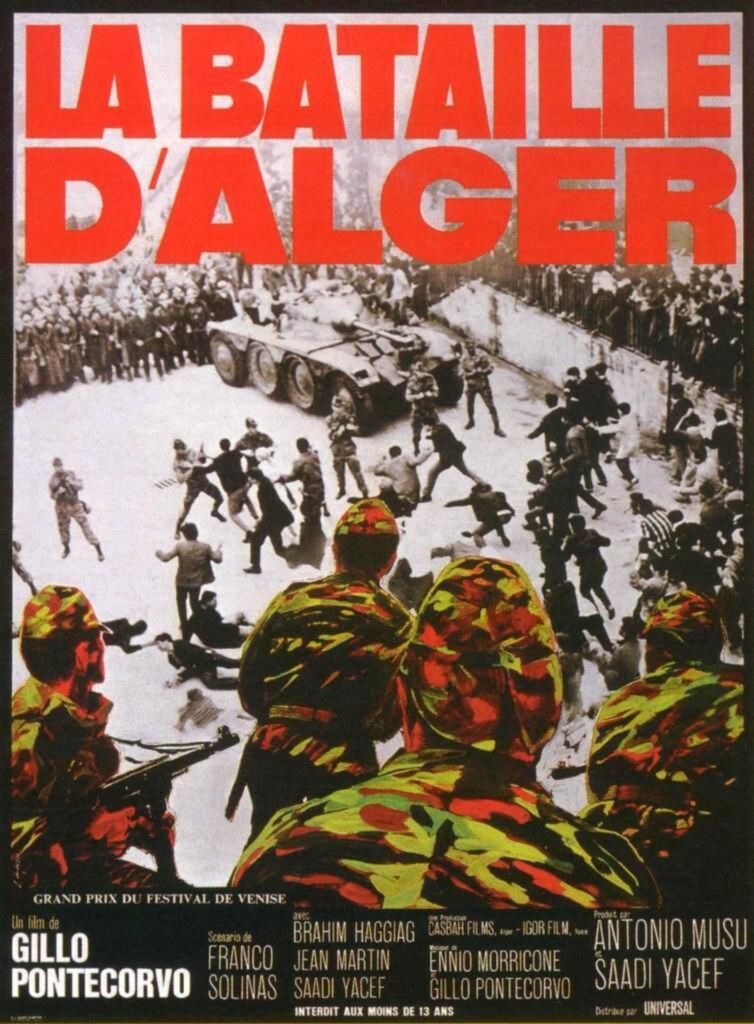Urban Warfare and Resistance: The Battle of Algiers and the Fight for Algerian Independence

By: Rania Basria / Arab America Contributing Writer
The Battle of Algiers, fought between 1956 and 1957, remains one of the most crucial and terrible battles of Algeria’s War of Independence (1954-1962). The National Liberation Front (FLN) launched a guerilla warfare campaign against French colonial control during this struggle, which was focused in the capital city of Algiers.
Algeria had been a French colony since 1830, and by the middle of the twentieth century, it was seen as an important part of France. Over a million French settlers, known as “pieds-noirs,” dominated Algerian politics and economics. However, the Algerian majority experienced institutional discrimination, economic disenfranchisement, and political marginalization. Algerians saw rising discontent in the post-World War II era, spurred on by global decolonization movements and the intellectual impetus of anti-imperialist conflicts worldwide.
The FLN was created in 1954 to achieve Algerian independence via military resistance. By 1956, the dispute had developed into a full-fledged war. The Battle of Algiers was a watershed moment in this battle, exposing both the tenacity of the Algerian resistance and the extent to which the French would go to keep control over Algeria.
The Battle of Algiers began in 1956 when the FLN launched a bombing, murder, and sabotage campaign against French military targets, government facilities, and civilian residents. The Casbah, Algiers’ densely populated Muslim area, became the base of FLN activities. The FLN’s goal was straightforward: push the French authorities into overreacting, rallying international opinion against French colonialism and increasing support for the independence struggle.
The French response was immediate and decisive. In January 1957, the French government sent General Jacques Massu and the 10th Paratrooper Division to Algiers with orders to destroy the uprising at all costs. Massu was given full blanche to use tactics to dismantle the FLN network. This signaled the start of a harsh crackdown that would have far-reaching ramifications for both France and Algeria.
On the other hand, French paratroopers used methodical and ruthless measures to eliminate the militants. They enforced curfews, established checkpoints, and massed arrests and house-to-house searches. To get information regarding FLN operations, French soldiers used a variety of intelligence-gathering measures, including torture. The French military’s use of torture, which was extensively documented and denounced, became a contentious and defining aspect of the Battle of Algiers.
The Casbah, a maze-like district, was closed off, and the people faced severe scrutiny and brutality. Thousands of Algerians were arrested, and many were held without trial. The French rationalized torture as a necessary evil to gather knowledge and save lives, shocking the world community and fueling widespread condemnation of French colonial policies.
By late 1957, the French military’s methods had begun to produce results. They were able to demolish much of the FLN’s network in Algiers using information, informants, and violent interrogations. On September 24, 1957, Saadi Yacef, a prominent FLN commander in Algiers, was apprehended; by early October, the FLN’s organizational apparatus in Algiers had been largely decimated.
While the French won a tactical win in Algiers, the fight was a watershed moment in the war with far-reaching political consequences. The ruthless repression of the uprising, along with the widespread use of torture, severely harmed France’s worldwide reputation and compromised the moral validity of her colonial authority. The conflict demonstrated the extent to which the French would take to keep control over Algeria, mobilizing sympathy for the independence cause both domestically and globally.
The Battle of Algiers did not conclude the Algerian War of Independence, but it did constitute a watershed moment in the fight. The FLN continued to fight in other sections of Algeria, and the severity of the French reaction during the struggle fueled local and international support for the independence cause. Algeria attained independence in 1962, following eight years of war and more than a million dead.
The conflict has left a lasting impact on military tactics, political philosophy, and human rights discourse. The techniques used by both sides created a benchmark for subsequent confrontations across the world. For example, the employment of guerrilla warfare and counter-insurgency techniques in urban environments was a model for later revolutionary movements and anti-terrorism operations.
The Battle of Algiers had a profound cultural and cinematic influence, particularly in the 1966 film of the same name directed by Gillo Pontecorvo. The film, a fictionalized retelling of the conflict, is well-known for its realistic depiction of urban guerilla combat and equal treatment of all sides. It was shot on location in Algiers and included numerous non-professional performers who had lived through the struggle, depicting the grim reality of colonialism and resistance.
Pontecorvo’s film became a reference point for revolutionary movements and is still studied today for its compelling narrative methods and political messages. Although it was prohibited in France for several years owing to its critical portrayal of French military tactics, it is now regarded as a political film classic.
The Battle of Algiers was a watershed point in Algeria’s independence movement and a sobering reminder of the difficulties and brutality of decolonization. It highlighted the human cost of colonial control and oppressed people’s desire to fight for independence at whatever cost. The battle’s legacy lives on today, providing a strong reminder of colonialism’s long-term impact and the ongoing worldwide struggle for justice and self-determination.
Visit our blog here!








